The History of a Mouthful of Bread, Jean Macé [best autobiographies to read TXT] 📗
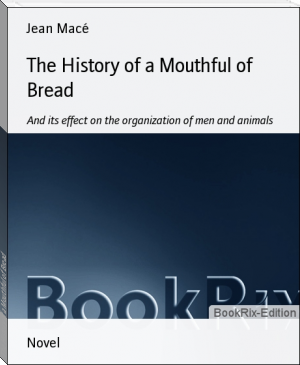
- Author: Jean Macé
Book online «The History of a Mouthful of Bread, Jean Macé [best autobiographies to read TXT] 📗». Author Jean Macé
is, a truncated tube. Then comes the stomach, situated in the very midst of the liver; which latter may easily be distinguished, even by the most cursory glance at luncheon, from its dark color. The intestine also goes right through the liver, doubling backwards and forwards several times: and thus the digestive tube supplies itself with bile from the cask (to borrow a commercial expression); and this saves the expense of a bile-duct (choledochian canal), which would be an unnecessary mode of conveyance in this case. The animal lives in water; consequently, instead of lungs he has gills: [Footnote: The land-snail has lungs.] these are those thin, finely-streaked plates which make a fringe at the very edge of the shell. Finally, on leaving the gills the blood is received by an arterial heart, with only one ventricle like that of the crustaceans, in the shape of a small pear, similar to ours, having an auricle, and an aorta, branching out so as to distribute the blood throughout the whole body. And now what do we find here, let me ask you, in this mutilated man, reduced to the soft portions of the trunk, whom I have been imagining? A heart, with its arteries; lungs; a liver; an intestine; a stomach and an oesophagus: that is to say, merely and simply the organs of nutrition. That is all, or very nearly so.
As you perceive, then, all the elements of our own feeding-machine lie between the two shells of a mollusk; in a rough state as yet, it is true; incomplete, and unruly; as in the case of the intestine, for instance, which in many of these creatures passes without ceremony through the heart: but even so they are quite sufficiently indicated to prevent their being mistaken. Now this machine, it is in vain to deny it, is the animal itself; but it lives at first, and it is this which dies in it last. The other matter (the locomotive power), important as it may seem to us in higher races, only holds a secondary position in reality: the proof of which is, that here is an animal reduced absolutely to a mere feeding-machine, who still lives, whilst there yet remains to be found one who has nothing left but his movement-machine, and who can yet exist. We cannot disown this primitive animal, for we have it within ourselves; lost, so to speak, in the midst of the accessory organs which are successively added to it in proportion as we rise in the animal scale, but still preserving its own life, its personality, if I may use the expression. Listen to this, for here is a history well worth hearing.
I will explain to you, hereafter, how all the actions of the movement-machine are performed by means of a network of nervous threads (filaments), whose centre of impulsion is in the brain. How our will acts upon the brain, and gives its orders to the muscles through the nervous fibres, I will not offer to explain: it is a fact, let that suffice us. You say to your foot, "Forward!" and off it starts; "Halt!" and it stops. Here is an organ under command, a servant of the brain, where we rule ourselves: with or without explanation, no one will ever dispute this. The oyster, who has neither head nor brain, has, as his only instrument of action, certain little masses of nervous substance scattered right and left, which are called ganglions . These communicate with each other and with the organs by nervous cords, which are interlaced in all directions, without having any common centre, and which give the impetus to all parts of the animal.
Well, the human oyster presents to us exactly the same nervous organisation. It has its ganglions and its nerves to itself, which are put into communication with the brain by some threads strayed among his own, but which are not under its orders, and which treat with it on equal terms. You remember, perhaps, the little republic talked about when we first entered the digestive tube; you have now the explanation of it. This republic is the original animal; it is the feeding-machine. I cannot describe it, and the kingdom of which you are queen, better than by comparing them to two States having diplomatic relations with each other, who exchange dispatches and reciprocal influences; and as to the importance of these respective influences, if one were to compare them I scarcely know to which side the balance could incline.
We shall return elsewhere to this detail, one of the most interesting of our organisation, and which here finds its natural explanation. For the present I will content myself with reminding you that, since the earliest days of human civilisation, all philosophers, all poets, and all moralists, whether sacred or profane, have borne witness to that double life within us, that inward being, blind and deaf, whose disordered impulses so often carry trouble into those higher regions where will and reason sit enthroned. Behold him taken in his lair at last, this mysterious being. I have just unveiled his origin to you. And here, dear child, I must shelter myself behind a profession of faith. There will not be wanting people to tell you that it is degrading man far too much to look so low for the sources of his organisation, and that this sentence- the human oyster -which expresses my idea so well, is neither more nor less than blasphemy. Let them talk, but adopt their opinion only when they have proved to you that man had a special Creator, and that the oyster came from a different hand from ourselves. I should like to know with what face we could venture to complain, poor worms that we are, because it has seemed good to our common Father to carry forward in us his previous creations, and in what respect human dignity would suffer from this contact with a being who, like us, is one of the works of God. That human pride may suffer thereby, I admit, and I am glad it should; but if God has included all creation in His love, we may well include it all in our respect. Whence comes our superiority at all, but from the gratuitous gifts of Him who has made us what we are? Is it to lose it, then, to find ourselves side by side with inferiors whom the Divine benevolence has visited like ourselves? Surely not. But enough of the oyster, who has never, that I am aware of, heard such strange discussions sounding in his ears before. I have no time nor courage now to speak of the other mollusks, who offer more or less the same system of organs which I have just described. I must hasten on to the Worms, who give us the last clue to the great enigma of the animal machine.
LETTER XXXIX.
VERMES-ZOOPHYTA. ( Worms and Zoophytes ).
Worms.
The worm of worms, the one you know best, is the earthworm: so he shall have the honor of representing his group.
He will not take much time to describe. He is, in brief, a tube, open at both ends, so as to allow food to come in and go out. That is all.
I talked to you before about the ruminants, those food-manufacturers who are employed in cooking victuals for the stomach, and in disengaging albumen from the coarse materials among which it is apparently lost, so as to give it out again in a more acceptable form. The ruminant has other workmen under him, whom I keep in store for you as the last of the eaters, and who prepare the raw material for him*. These are the vegetables, who seek out the elements of albumen in earth, water, and air, those final sources of all alimentation. The earthworm also is a preparer , but in a peculiar way. Look along the garden-walks in summer-time, after rainy weather: you will see here and there, little heaps of earth moulded into small sticks, like dough which has been passed through a tube. [Footnote: M. Mace's account of the earthworm's life seems founded on the assumption that it extracts its nourishment from the earth itself, i.e., from inorganic matter, as
vegetables do, to use his own words. But this notion is so entirely at variance with present received opinions, and also with the fact that the animal possesses a gizzard for digesting, as well as an intestinal canal, that it has been necessary to make considerable alterations in the description. To dismiss his theory of the primitive animal, etc., altogether, was, however, impossible, without omitting the whole chapter; but as young heads are not likely to trouble themselves about it, and it is very innocent in itself, it will do no harm; subject to this warning, that M. Macé has taken the earthworm for a more simply organised creature than it really is.-TR.] This is the damp soil which the worm has passed through his tube, after extracting from it, during its passage, the various elements of fertility he requires for the support of his life. This is what makes him so particularly fond of garden soil, because it is richer in animal and vegetable matter than common earth, and proves therefore more nourishing food. The worm, then, feeds on the fat of the earth, which he converts into azotic aliment for the use of moles, hens and Chinese. It only figures, it is true, for want of something better, in Chinese cookery, so profusely hospitable for all that; but the hen doats upon it, and you do not despise it yourself when it comes back to you in the form of a chicken's wing, that second transformation of the matter of which the soil of your garden is composed. It is told of certain savage tribes, the victims of constant scarcity, that they swallow little balls of clay in order to keep down their hunger; and during the great famines in India the distracted inhabitants may, we are told, be seen digging up the banks of the rivers to feed on the fertile clay in which the splendid vegetation of their country is developed. This is a desperate trial of that primeval system of alimentation which answers perfectly with the worm, but becomes a cruel mockery in the case of an organisation as exacting as that of man. Let us examine a little more closely, then, this wonderful tube.
At first sight one notices, to begin with, that it is composed of perfectly distinct rings, all quite alike. Inside as well as out each of these rings is an exact repetition of the other. They are all formed of circular muscles, enclosed between two coats, which extend from one to the other. A series of ganglions, arranged in the form of a necklace along the whole length of the body, set in motion the muscular system of the rings, each of which possesses its local centre of impulsion. Each feeds itself in its place from the nourishing juices with which it is in contact, the interior coat enjoying the double property of distilling digestive juices and absorbing digested ones. These juices pass through the muscular partition, and proceed to bathe the outer coat, which plays, at the same time, the part of coat and lung, and affords a passage to the air through its soft, damp surface, like that of gills. From all this results a fine red blood, such as we have not met with since we left the reptiles, and which is manufactured in all parts of the body at once.
Each of these rings, then, the worm's only organs, is a little eating machine to and for itself, and at the same time a little movement machine also; in fact, a complete animal.
As you perceive, then, all the elements of our own feeding-machine lie between the two shells of a mollusk; in a rough state as yet, it is true; incomplete, and unruly; as in the case of the intestine, for instance, which in many of these creatures passes without ceremony through the heart: but even so they are quite sufficiently indicated to prevent their being mistaken. Now this machine, it is in vain to deny it, is the animal itself; but it lives at first, and it is this which dies in it last. The other matter (the locomotive power), important as it may seem to us in higher races, only holds a secondary position in reality: the proof of which is, that here is an animal reduced absolutely to a mere feeding-machine, who still lives, whilst there yet remains to be found one who has nothing left but his movement-machine, and who can yet exist. We cannot disown this primitive animal, for we have it within ourselves; lost, so to speak, in the midst of the accessory organs which are successively added to it in proportion as we rise in the animal scale, but still preserving its own life, its personality, if I may use the expression. Listen to this, for here is a history well worth hearing.
I will explain to you, hereafter, how all the actions of the movement-machine are performed by means of a network of nervous threads (filaments), whose centre of impulsion is in the brain. How our will acts upon the brain, and gives its orders to the muscles through the nervous fibres, I will not offer to explain: it is a fact, let that suffice us. You say to your foot, "Forward!" and off it starts; "Halt!" and it stops. Here is an organ under command, a servant of the brain, where we rule ourselves: with or without explanation, no one will ever dispute this. The oyster, who has neither head nor brain, has, as his only instrument of action, certain little masses of nervous substance scattered right and left, which are called ganglions . These communicate with each other and with the organs by nervous cords, which are interlaced in all directions, without having any common centre, and which give the impetus to all parts of the animal.
Well, the human oyster presents to us exactly the same nervous organisation. It has its ganglions and its nerves to itself, which are put into communication with the brain by some threads strayed among his own, but which are not under its orders, and which treat with it on equal terms. You remember, perhaps, the little republic talked about when we first entered the digestive tube; you have now the explanation of it. This republic is the original animal; it is the feeding-machine. I cannot describe it, and the kingdom of which you are queen, better than by comparing them to two States having diplomatic relations with each other, who exchange dispatches and reciprocal influences; and as to the importance of these respective influences, if one were to compare them I scarcely know to which side the balance could incline.
We shall return elsewhere to this detail, one of the most interesting of our organisation, and which here finds its natural explanation. For the present I will content myself with reminding you that, since the earliest days of human civilisation, all philosophers, all poets, and all moralists, whether sacred or profane, have borne witness to that double life within us, that inward being, blind and deaf, whose disordered impulses so often carry trouble into those higher regions where will and reason sit enthroned. Behold him taken in his lair at last, this mysterious being. I have just unveiled his origin to you. And here, dear child, I must shelter myself behind a profession of faith. There will not be wanting people to tell you that it is degrading man far too much to look so low for the sources of his organisation, and that this sentence- the human oyster -which expresses my idea so well, is neither more nor less than blasphemy. Let them talk, but adopt their opinion only when they have proved to you that man had a special Creator, and that the oyster came from a different hand from ourselves. I should like to know with what face we could venture to complain, poor worms that we are, because it has seemed good to our common Father to carry forward in us his previous creations, and in what respect human dignity would suffer from this contact with a being who, like us, is one of the works of God. That human pride may suffer thereby, I admit, and I am glad it should; but if God has included all creation in His love, we may well include it all in our respect. Whence comes our superiority at all, but from the gratuitous gifts of Him who has made us what we are? Is it to lose it, then, to find ourselves side by side with inferiors whom the Divine benevolence has visited like ourselves? Surely not. But enough of the oyster, who has never, that I am aware of, heard such strange discussions sounding in his ears before. I have no time nor courage now to speak of the other mollusks, who offer more or less the same system of organs which I have just described. I must hasten on to the Worms, who give us the last clue to the great enigma of the animal machine.
LETTER XXXIX.
VERMES-ZOOPHYTA. ( Worms and Zoophytes ).
Worms.
The worm of worms, the one you know best, is the earthworm: so he shall have the honor of representing his group.
He will not take much time to describe. He is, in brief, a tube, open at both ends, so as to allow food to come in and go out. That is all.
I talked to you before about the ruminants, those food-manufacturers who are employed in cooking victuals for the stomach, and in disengaging albumen from the coarse materials among which it is apparently lost, so as to give it out again in a more acceptable form. The ruminant has other workmen under him, whom I keep in store for you as the last of the eaters, and who prepare the raw material for him*. These are the vegetables, who seek out the elements of albumen in earth, water, and air, those final sources of all alimentation. The earthworm also is a preparer , but in a peculiar way. Look along the garden-walks in summer-time, after rainy weather: you will see here and there, little heaps of earth moulded into small sticks, like dough which has been passed through a tube. [Footnote: M. Mace's account of the earthworm's life seems founded on the assumption that it extracts its nourishment from the earth itself, i.e., from inorganic matter, as
vegetables do, to use his own words. But this notion is so entirely at variance with present received opinions, and also with the fact that the animal possesses a gizzard for digesting, as well as an intestinal canal, that it has been necessary to make considerable alterations in the description. To dismiss his theory of the primitive animal, etc., altogether, was, however, impossible, without omitting the whole chapter; but as young heads are not likely to trouble themselves about it, and it is very innocent in itself, it will do no harm; subject to this warning, that M. Macé has taken the earthworm for a more simply organised creature than it really is.-TR.] This is the damp soil which the worm has passed through his tube, after extracting from it, during its passage, the various elements of fertility he requires for the support of his life. This is what makes him so particularly fond of garden soil, because it is richer in animal and vegetable matter than common earth, and proves therefore more nourishing food. The worm, then, feeds on the fat of the earth, which he converts into azotic aliment for the use of moles, hens and Chinese. It only figures, it is true, for want of something better, in Chinese cookery, so profusely hospitable for all that; but the hen doats upon it, and you do not despise it yourself when it comes back to you in the form of a chicken's wing, that second transformation of the matter of which the soil of your garden is composed. It is told of certain savage tribes, the victims of constant scarcity, that they swallow little balls of clay in order to keep down their hunger; and during the great famines in India the distracted inhabitants may, we are told, be seen digging up the banks of the rivers to feed on the fertile clay in which the splendid vegetation of their country is developed. This is a desperate trial of that primeval system of alimentation which answers perfectly with the worm, but becomes a cruel mockery in the case of an organisation as exacting as that of man. Let us examine a little more closely, then, this wonderful tube.
At first sight one notices, to begin with, that it is composed of perfectly distinct rings, all quite alike. Inside as well as out each of these rings is an exact repetition of the other. They are all formed of circular muscles, enclosed between two coats, which extend from one to the other. A series of ganglions, arranged in the form of a necklace along the whole length of the body, set in motion the muscular system of the rings, each of which possesses its local centre of impulsion. Each feeds itself in its place from the nourishing juices with which it is in contact, the interior coat enjoying the double property of distilling digestive juices and absorbing digested ones. These juices pass through the muscular partition, and proceed to bathe the outer coat, which plays, at the same time, the part of coat and lung, and affords a passage to the air through its soft, damp surface, like that of gills. From all this results a fine red blood, such as we have not met with since we left the reptiles, and which is manufactured in all parts of the body at once.
Each of these rings, then, the worm's only organs, is a little eating machine to and for itself, and at the same time a little movement machine also; in fact, a complete animal.
Free e-book «The History of a Mouthful of Bread, Jean Macé [best autobiographies to read TXT] 📗» - read online now
Similar e-books:
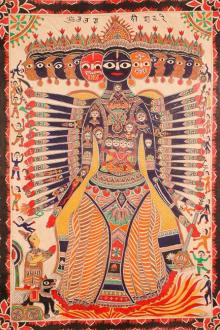
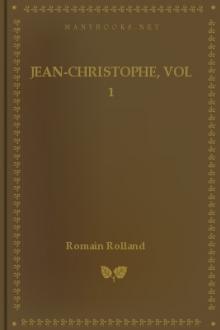
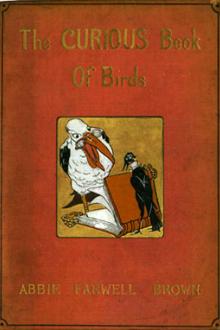

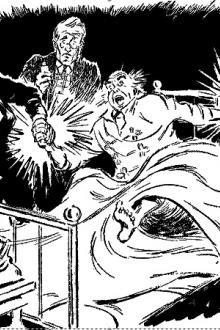
Comments (0)